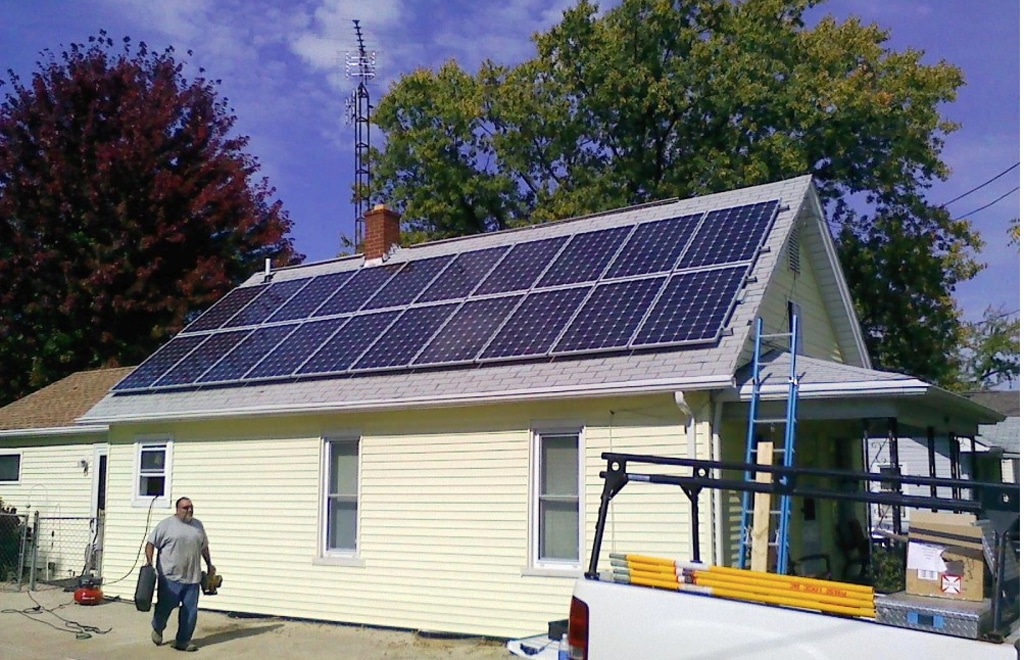The staff of the Michigan Public Service Commission (MPSC) issued their Annual Net Metering & Solar Program Report for the calendar year 2016. This article extracted the solar portion of the net metering report, which constituted the bulk of the activity, from utility annual report submissions made to the MPSC from investor owned utilities and rural electric cooperatives. The MPSC staff made these submissions into a table.
In analyzing the submissions, some inconsistencies may occur due to net metering of hybrid installations, multiple solar installations at one site, reporting of systems in both direct current (DC) and alternating current (AC) capacities and the lack of voluntary reporting by some of the rural electric cooperatives. In addition, the report does not contain systematic net metering information from the more than 40 municipal utilities in Michigan.
There are about 2,295 solar net metered installations in the utility submissions referenced by the report, of which 426 were installed in 2016. These installations are in two categories, up to 20 kilowatts (kW) of capacity, and 20-150 kW. A larger category, 150-550 kW is generally used for other renewable energy sources. The total capacity of PV reported in the submissions was 19.9 MW, of which 5.2 MW was installed in 2016.
The two big investor owned utilities, DTE Energy and Consumers Energy have the lion’s share of PV net meters and capacity. DTE has 1,388 net metered-systems for 11.5 MW, and Consumers has 514 net meters and 3.2 MW. However, Consumers had faster growth in 2016 with more aggressive programs, with 205 net meters and 3.2 MW installed in 2016 versus DTE’s 151 net meters and 1.4 MW.
Utility submission reports were also broken down by zip code. The zip code with the largest number of net metered PV systems was 48103, with 129 installations through 2016. This zip code comprised of Ann Arbor and other localities of Washtenaw County, the home of the University of Michigan and progressive politics, so being a “solar capital” would not be a surprise.
The report follows Ann Arbor’s recent decision move towards 100% renewable energy in its municipal electricity supply.
The first category net metered systems were subject to a capacity limit of 0.5% of the peak capacity of each utility. All of the utilities’ net metered installations were well under this low limit, with the exception of the Upper Peninsula Power Company (UPPCO), based in Houghton. UPPCO reported the third highest number of solar net metered systems, 110 totaling over 667 kW of capacity. They reported 23 installations totaling 191 kW in 2016, reaching the 0.5% limit in July of that year, suspending their program.
The MPSC report also included a table that estimated Michigan’s total PV capacity. Through 2016, DTE’s “SolarCurrents” installations totaled over 20 MW. Other MW-scale contributors included Indiana Michigan’s 4.6 MW installation, two Consumers Energy “solar gardens” totaling 4 MW, a 1.22 MW IKEA store system and a 1.2 MW Spartan Solar system. All told, the total estimated Michigan PV capacity at the end of 2016 was just under 58 MW.
Estimates in 2017 indicated a huge jump in capacity just from a number of large installations. Seven systems totaling more than 62 MW were reported, the largest being a 48 MW DTE Lapeer installation and a 10 MW Michigan State University installation. This would more than double the total capacity in Michigan to over 120 MW by the end of 2017.
This content is protected by copyright and may not be reused. If you want to cooperate with us and would like to reuse some of our content, please contact: editors@pv-magazine.com.








By submitting this form you agree to pv magazine using your data for the purposes of publishing your comment.
Your personal data will only be disclosed or otherwise transmitted to third parties for the purposes of spam filtering or if this is necessary for technical maintenance of the website. Any other transfer to third parties will not take place unless this is justified on the basis of applicable data protection regulations or if pv magazine is legally obliged to do so.
You may revoke this consent at any time with effect for the future, in which case your personal data will be deleted immediately. Otherwise, your data will be deleted if pv magazine has processed your request or the purpose of data storage is fulfilled.
Further information on data privacy can be found in our Data Protection Policy.